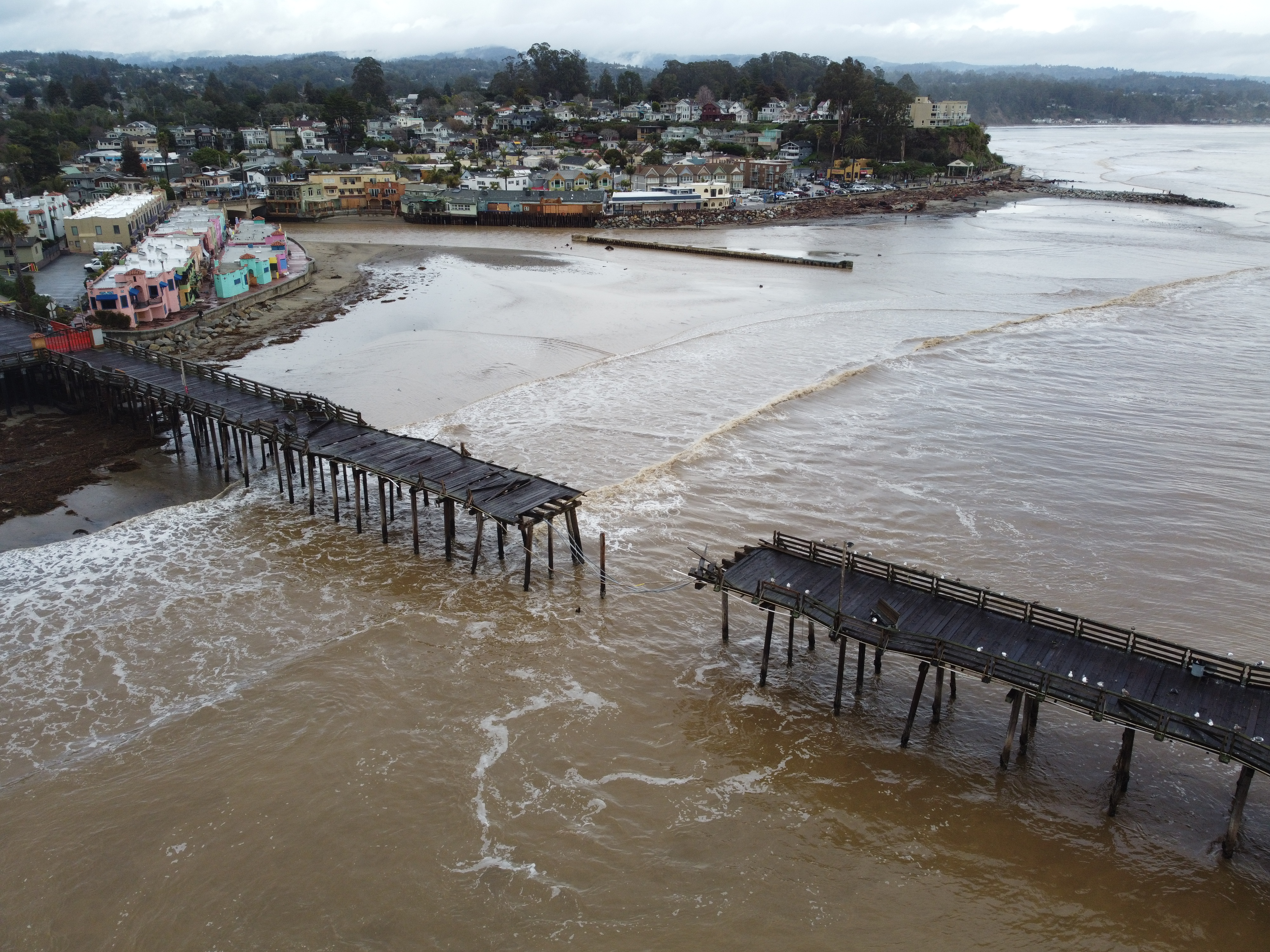Many North County residents were probably holding their breath Thursday when word came from Caltrans that the eastbound state Route 78 on-ramp from El Camino Real was closed.
Two weeks ago, the Great Flood of 2024 closed all lanes of the freeway in both directions at that spot, with traffic reopening later that day.
While that was a huge headache for drivers, it paled in comparison to what happened a year ago, though, which is what folks might have been really worried about. Flooding then created a months-long traffic nightmare when a massive sinkhole and erosion prompted the need for drastic, round-the-clock emergency repairs.
Get top local stories in San Diego delivered to you every morning. Sign up for NBC San Diego's News Headlines newsletter.
This week, however, not a single lane of through traffic was closed on the freeway, thanks to a simple yet critical plan that Caltrans maintenance supervisor Wes Abernathy cooked up for that particular spot.
"We had the equipment," Caltrans public-affairs manager Steve Welborn told NBC 7 on Friday, adding later that "Abernathy, who used to work in irrigation, had the idea to transfer the water from a nonworking drain to a working drain, and it worked out quite well."
The equipment consisted of small portable pumps, the kind that could be carried by two people and possibly bought off the shelf, Welborn thought.
The Great Flood of 2024
The ramp at El Camino Real has two drains, one at the top, and a second at the bottom, pretty much in sight of each other. The problem is, the lower drain clogs with debris and water quickly becomes too deep to easily clear it. Enter the pumps. The first one that was deployed Thursday can pump the accumulated water at a rate of 150 gallons a minute, Welborn said. Workers ran it for 90 minutes, but it was getting the job done. So the Caltrans crew added a second pump, this one capable of adding another 263 gallons per minute to the total, which did the trick. Ninety minutes later, the worst was over, they cleared the lower drains and were able to re-open the on-ramp.
All of this is necessary, of course, because the freeway abuts the Buena Vista Lagoon, and no amount of engineering can prevent that from rising when a storm hits, officials have said.
So is this Abernathy's plan the SOP for heavy rains moving ahead? Welborn said he hadn't heard anything specifically to that effect but thought that they would do the same thing to keep the route open during heavy rain cycles for the foreseeable future. And if the next storm dumps more than Thursday's system did? Well, Caltrans has a third pump in its back pocket, one that can displace 530 gallons per minute. And if that's not enough? Then they'll have no choice but to close freeway lanes.
Let's hope it doesn't come to that.




